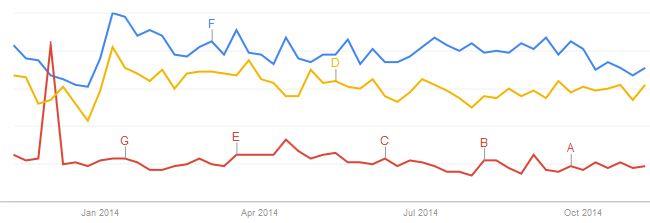TESL stands for Teaching English as a Second Language. It’s pronounced TESL to rhyme with WRESTLE.
Simply put, this means teaching English to people who are not native English speakers but who live in a country where English is the main language. For example, teaching English to Chinese speaking immigrants in Canada.
It used to be quite a common acronym in the US and Asia. However, compare it to TEFL or Teaching English as a Foreign Language which is teaching English to people who need English for business or pleasure but not for “everyday” life (i.e. they live in a country where the national language isn’t English).
These days TESL isn’t much used, instead the acronym TESOL is preferred – Teaching English to Speakers of Other Languages.
Relative Use

The graph on this page shows the relative use of TESL from November 2013 – November 2014. It is taken from Google Trends and shows search queries for the three terms: TESL (red), TESOL (mustard) and TEFL (blue).
As you can see, TESL is far less popular than the other two terms except, for some strange reason, in early December 2013 when there’s a sudden spike in interest in searches online for TESL. If anyone can suggest a reasonable theory why this might have happened, feel free to comment below on this!
Practically Speaking
At the chalkface, there is little difference between TESL, TEFL or TESOL and day-to-day in your classroom the distinction between them is not something worth worrying about.
Most teachers will use the term TEFL so it’s probably best to stick to that.
Useful Links
TEFL vs TESOL vs TESL vs CELTA vs… – a look at the differences between these acronyms
TEFL – Teaching English as a Foreign Language – a look in detail at this acronym
TESOL – Teaching English to Speakers of Other Languages – a look at this in more detail
Google Trends – for the 3 terms over the past 10 years or so
